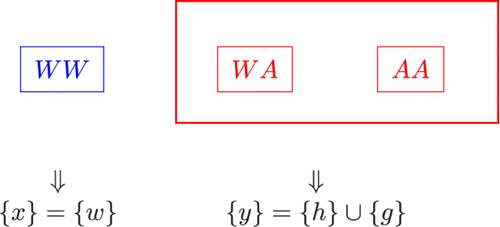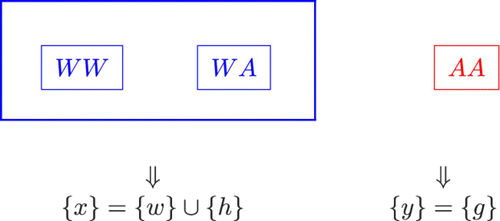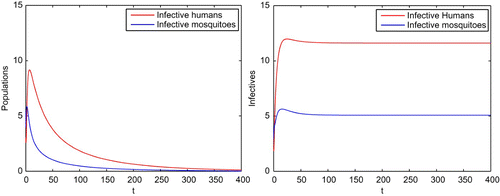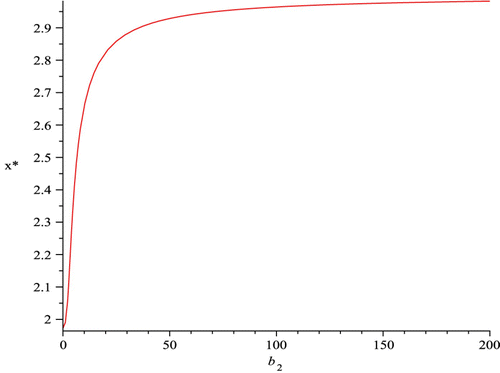Figures & data
Figure 1. In the case of dominant transgenes, we include all mosquitoes with two copies of the wild genes into group x and include all mosquitoes with one or two copies of the transgenes into group y.

Figure 2. In the case of recessive transgenes, we include all wild mosquitoes and mosquitoes with only one copy of the transgenes into group x and include all mosquitoes with two copies of the transgenes into group y.

Table 1. Summary table of the results for positive A
1 in EquationEquation (11) .
.
Table 2. Summary table of the results for positive A
2 in EquationEquation (16)
Figure 3. For the left figure, the parameters are given in Example 3.1, where there exist a stable boundary equilibrium and no positive equilibrium. Solutions approach the boundary equilibrium. For the middle figure, the parameters are given in Example 3.2, where the boundary equilibrium is a saddle point and there exists a unique positive equilibrium which is a sable node. Solutions approach the unique positive equilibrium. For the right figure, the parameters are given in Example 3.3, where there exist a stable boundary equilibrium and two positive equilibria, one of which is a saddle point and one of which is a stable node. Solutions approach either the boundary equilibrium or the stable positive equilibrium depending on their initial conditions.

Figure 4. With the same parameters given in Example 5.1, the reproductive number is R
0=0.9427 and hence the infection dies out when there are no transgenic mosquitoes released as in the left figure. With the transgenic mosquitoes released, the numbers of malaria-resistant and non-resistant mosquitoes are both increased. The reproductive number becomes which results in the spread of the infection as shown in the right figure.

Figure 5. The component of the malaria non-resistant mosquitoes S
v=x* at the infection-free equilibrium of the malaria model with transgenic mosquitoes, given in EquationEquation (37), is plotted as a function of b
2 which shows that x* is an increasing function of b
2, and approaches 2.964 as b
2 increases.
